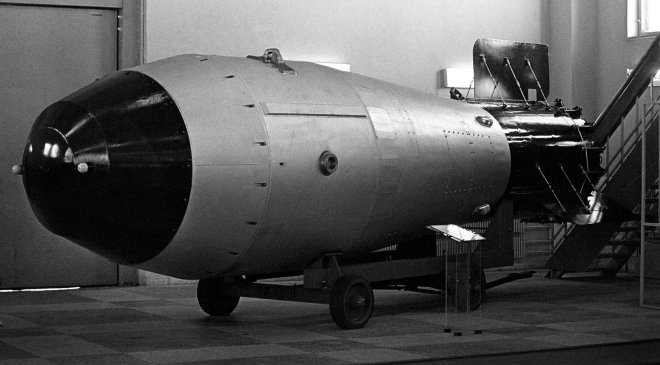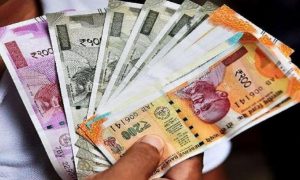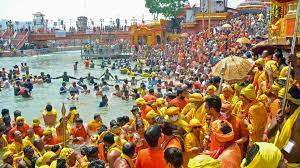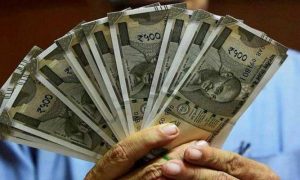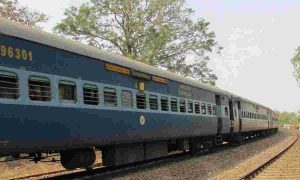Most Powerful Nuclear Weapon Ever Detonated: World War 2 might have officially culminated on September 2, 1945, with the unconditional surrender by Japan on August 14, 1945. But the battered, wounded, and “humanity challenging seeds of The End” were sown twice, that too above the ground on 6 and 9 August 1945 over the Japanese cities of Hiroshima and Nagasaki, respectively by the two atomic bombs unleashed and detonated by the United States. Little Boy and Fat Man established America as the next superpower of the world even as hundreds of thousands were vaporized. Not so well done, Boy and Man!
This was a watershed moment in modern history, i.e. post Second World War. Little Boy and Fat Man gave birth to the Cold War, a clear-cut fierce, deadly, and lethal not so healthy competition (rivalry/enmity) between the Capitalist west led by the USA and the Communist Bloc led by the United Socialist Soviet Republic (USSR made up of 15 republics).
This was a watershed moment in modern history, i.e. post Second World War. Little Boy and Fat Man gave birth to the Cold War, a clear-cut fierce, deadly, and lethal not so healthy competition (rivalry/enmity) between the Capitalist west led by the USA and the Communist Bloc led by the United Socialist Soviet Republic (USSR made up of 15 republics).
The race, mad passion to manufacture the most dangerous weapons of mass destruction was going north and saw the testing of even more powerful nuclear weapons by both sides. OMG, the struggle for who will have the ultimate bomb was unparalleled
Though, one instance stands out that took place on October 30, 1961, in the Arctic Ocean.
The testing of the world’s most powerful nuclear bomb.
Call it Tsar Bomba, in Russian means “King of Bombs”, byname of RDS-220, also called Big Ivan. The Soviet thermonuclear bomb ignited in a test over Novaya Zemlya Island. The largest nuclear weapon ever set off, it produced the most powerful human-made explosion ever recorded.
Watch Video of the most powerful nuclear weapon ever detonated
It had a 100-megaton capacity, though the resulting fallout from such a blast was considered too dangerous for a test situation. Thus, it was modified to yield 50 megatons, which was estimated to be about 3,800 times the strength of Little Boy dropped on Hiroshima. The weapon weighed 27 tons, with a length of some 26 feet (8 metres) and a diameter of about 7 feet (2 metres).
Let’s take a look at 10 facts about Tsar Bomba about which it is said, “Every aspect of the phrase, ‘weapons of mass destruction,’ applies to the Tsar Bomba. A massive device, designed to decimate everything, that’s what the bomb was. Only one was detonated, and that was enough.”
1. Most Powerful Detonation Ever

Call it Tsar Bomba, in Russian means “King of Bombs”, byname of RDS-220, also called Big Ivan. (BBC)
Tsar Bomba remains the most powerful device ever detonated by mankind. To compare, the most powerful device the United States ever created was the B41 which had a maximum yield of 25 megatons TNT, while the Tsar Bomba had a maximum yield of 100 megatons of TNT.
2. Could’ve Been More Powerful

One of the ways the Soviets came up with to allow more time for the plane to get away from the area was to attach a parachute to the device.
The bomb was tested at 50 megatons, but it could have been tested at its maximum yield, 100 megatons of TNT. It wasn’t tested at this due to fear of nuclear fallout, as well as the increased risk that the crew inside the plane faced.
3. Huge Mushroom Cloud

The mushroom cloud is estimated to have gone as high as 40 miles in the sky, which is about seven times as tall as Mount Everest.
Of course, the most powerful nuclear bomb ever detonated had a massive mushroom cloud. The mushroom cloud is estimated to have gone as high as 40 miles in the sky, which is about seven times as tall as Mount Everest. At this height, the cloud went through the stratosphere as well as the mesosphere.
The bomb also unleashed a massive fireball to accompany the mushroom cloud. Once detonated, the fireball nearly reached the height at which the bomb was dropped and was visible more than 600 miles away from the site.
4. After Effects

If we were using the Richter scale, the general tool used to measure the strength of earthquakes, the Tsar Bomba would have measured an 8.1. (BBC)
If we were using the Richter scale, the general tool used to measure the strength of earthquakes, the Tsar Bomba would have measured an 8.1. But, because the bomb was detonated in the air, it didn’t cause a crazy shockwave on the ground. A thermal pulse from the blast could be felt several hundred miles away, and third degree burns could be had from the blast as far as 62 miles from the detonation site. Window panes were broken several hundred miles from the site and the blast resulted in a massive in-air shockwave that almost took down the plane that dropped the bomb.
5. Parachute

This was mildly successful, as the plane was able to get out of the area, but not far enough away to completely avoid the effects of the blast (the plane made it an estimated 26 miles away). (BBC)
As stated, the bomb almost knocked the plane that dropped it out of the sky. This is due to a multitude of factors including the fireball, mushroom cloud, seismic waves and more. The Soviets had planned for this situation, estimating that the pilots and crew on-board the plane only had a 50 percent chance at survival. Because of this, one of the ways the Soviets came up with to allow more time for the plane to get away from the area was to attach a parachute to the device. This was mildly successful, as the plane was able to get out of the area, but not far enough away to completely avoid the effects of the blast (the plane made it an estimated 26 miles away). When the effects of the blast struck the plane, it instantly fell 3,000 feet.
6. Big Ivan or Tsar Bomba?

The bomb derived its primary name, Tsar Bomba, from other Soviet weaponry such as the Tsar Cannon and the Tsar Bell. (YouTube/@CanadianForcesArmor)
Both. Tsar Bomba was nicknamed Big Ivan, as well as a slew of other names like Project 7000, Product Code 202 and more. The bomb derived its primary name, Tsar Bomba, from other Soviet weaponry such as the Tsar Cannon and the Tsar Bell. The United States Central Intelligence Agency (CIA) had their own codename for the test, “Joe 111.”
7. It Was Too Big, Say Three Big

The bomb was essentially built to flex the Soviet Union’s military strength. Because of this, the bomb was so huge that it was basically too huge. (Reuters)
The bomb was essentially built to flex the Soviet Union’s military strength. Because of this, the bomb was so huge that it was basically too huge. What does this mean? It means that it wasn’t practical for wartime use. For one, moving the bomb around was simply too complicated. It didn’t even really fit on the jet that dropped it from the sky; that plane had to be heavily modified for the bomb. Second, the crew on the plane only had a 50% chance at survival. All of this comes even after the bomb was scaled down from its original 100 megaton size.
8. Quick Build

Reports vary on the exact length of time, but the general consensus is that it only took 14-16 weeks to design and construct the bomb.
You would think a bomb of this stature would be built over several years. After all, it’s the largest explosive ever developed and detonated by mankind. This is not so. Incredibly, the device was made in just a few months. Reports vary on the exact length of time, but the general consensus is that it only took 14-16 weeks to design and construct the bomb. 14-16 weeks. That is only three to four months!
9. Tu-95

The Tu095 that was equipped with the bomb had to have its bomb doors removed, as well as its fuselage fuel tanks.
Tsar Bomba was to be dropped in the sky from a Tu-95. The only issue? It couldn’t exactly fit the massive bomb. Weighing in at 27 metric tons (or about 60,000 pounds), the bomb was over 26 feet long and about seven feet in diameter. Because of this, the Tu095 that was equipped with the bomb had to have its bomb doors removed, as well as its fuselage fuel tanks.
10. Fast Facts
- More powerful than all the bombs exploded in WW2, combined
- 1,400 times more powerful than the nuclear bombs detonated over Nagasaki and Hiroshima
- Shockwave from the bomb raced around the world three times, and shattered windows in Finland; 500 plus miles away
- The Tu-95 used was painted in reflective white paint, to hopefully aid in deflecting the heat
- Total destruction (as it sounds, everything in the radius is destroyed) radius for the bomb was estimated between 22-34 miles
- Sensors registered the bomb’s blast wave orbiting the Earth not once, not twice, but three times
- Reports say a seismic shock wave which was equivalent to 5.0 on the Richter Scale was measured around the world
(We have collected this entire information after a thorough research work, going through many sources and after strict filtering, collected from very few sources and have not taken any liberty with the technical terms, timeline of events, and the facts. The credit lies completely with those sources; a big, big thanks to them! We want to convey the most accurate information to you just like we do every time. Your valuable feedback and comments are highly desirable. For the same, please write to the author at Email id: [email protected])

